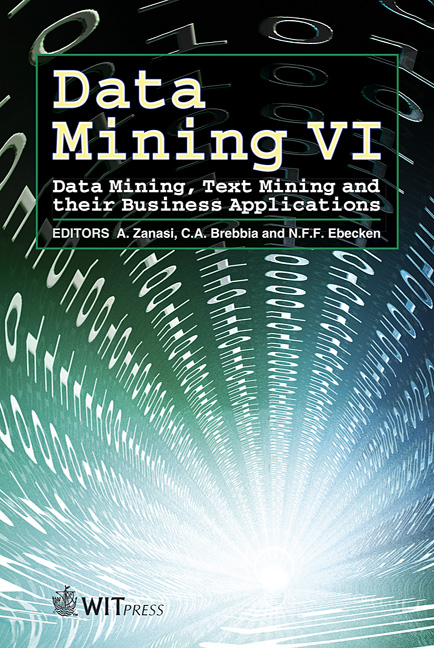E-commerce Models For Banks’ Profitability
Price
Free (open access)
Volume
35
Pages
11
Published
2005
Size
801 kb
Paper DOI
10.2495/DATA050481
Copyright
WIT Press
Author(s)
V. Aggelis
Abstract
The use of data mining methods in the area of e-business can already be considered of great assistance in prediction, knowledge management, and decision support. In e-commerce in particular there are a significant number of metrics which have been tested and used for measuring interesting parameters. In most cases these parameters are in relation with customer habits and customer profitability. Nowadays, many merchants cooperate with banks for authorizing credit card transactions in order to purchase products. Banks are also interested, in measuring the profit and the strength of this cooperation. In this paper we introduce two models with this scope, (a) a merchant clustering model and (b) a bank revenue predictive model. According to the first model, a bank scores and classifies its cooperating merchants using a number of parameters, while in the second model, a bank predicts its revenue from e-commerce transactions. Keywords: data mining, clustering, k-means algorithm, predictive model, linear regression. 1 Introduction Banking or financial data treatment is generally conducted using several data mining methods such as Linear Regression, Clustering, Classification and others aiming at the development of patterns, rules, predictive models and finally forecasting. These methods produce interesting as well as useful results. However, not all kinds of results lead to rigid conclusions. From this point of view the data miner and the judgment of the user are essential in evaluating the results and especially the predictive models efficiency. Therefore the co-operation between people expert in data mining and others with good knowledge of the data sets is important leading to proper evaluation of the predictive model. In the banking area this combination is definitely necessary due to the singularity of bank data as well as bank market rules.
Keywords
data mining, clustering, k-means algorithm, predictive model, linear regression.





